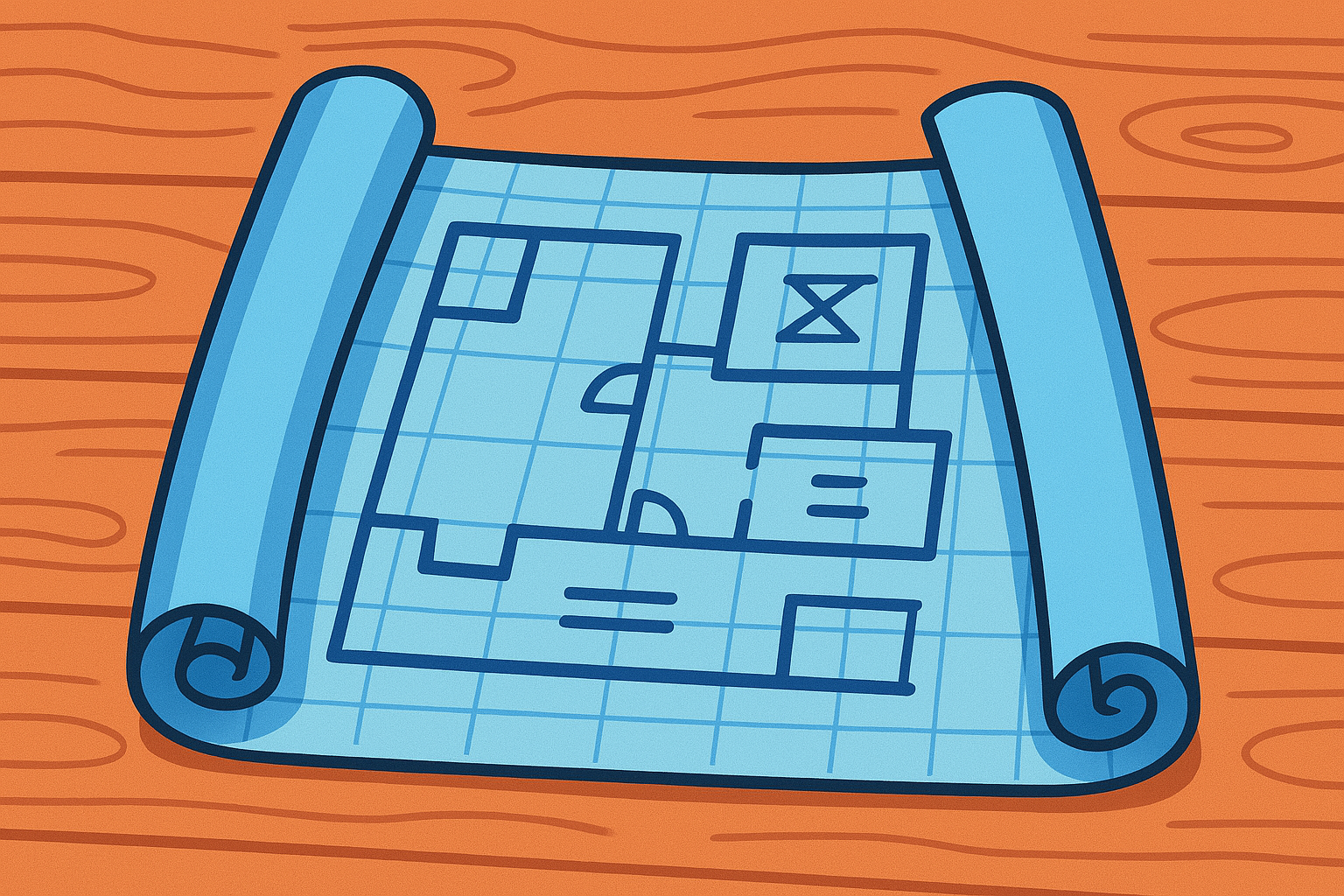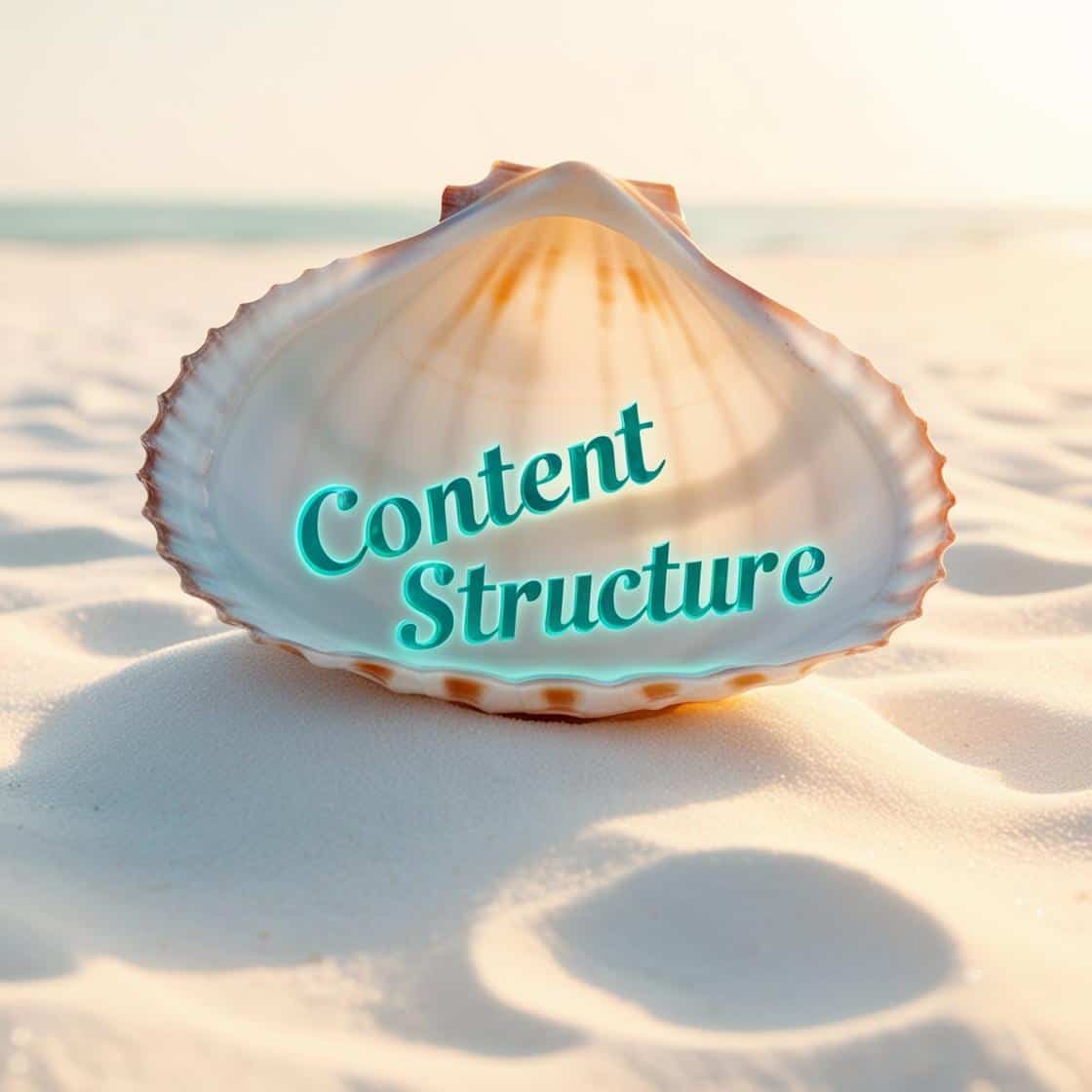So, what does website structure mean?
It isn’t just tech jargon thrown around to sound impressive. It’s about how all the pages and content on a site get their act together.
When you’re talking about website structure, you’re really talking about the organisation and connections that make up a site’s backbone. It’s like setting up a shop – everything has its place, making sure visitors can find what they need without wandering around aimlessly.
Imagine going to an unfamiliar grocery store where all the aisles are randomly organized is so frustrating, isn’t it? The same applies online. A solid website structure is the blueprint that ensures everything’s in its right place, making it super easy for visitors to navigate your site and dig into the content without feeling lost.
Search engines, like Google are a lot like us, loving a good, well-organized structure to index content efficiently.

Why does all this matter? First of all, it helps users find what they’re looking for. Visiting a website with a clear structure is like walking into a store where everything’s laid out perfectly with clear signposts. No confusion, just straightforward and satisfying browsing.
Second, it’s a big deal for SEO. Search engines prefer to crawl and rank sites that have their act together. So, a spotless structure means a better shot at popping up in those search results which is what you are aiming for.
Now, what’s going to make up your website structure?
Picture elements like your homepage, which is the grand entrance where it all begins. Then there’s the navigation menu, your helpful guide pointing out landmarks like the ever-important “About Us” or “Products” sections.
Next, you’ve got categories where you bundle related topics into neat packets. And internal links, they’re those handy shortcuts steering visitors smoothly from one page to another.
Lastly, it’s about a tidy URL structure, a trail of breadcrumbs leading visitors through your digital world. Let’s explore the details of how website structure shapes the online experience.
Key Components of a Website Structure
Understanding what website structure means helps you build a site that’s not only functional but also loved by users and search engines.
When it comes down to setting up a killer website, understanding the key elements of its structure is like getting the hang of the instruments in a band. Each one plays a crucial role, creating harmony and keeping everything in tune.
The homepage acts as your site’s front door, where first impressions are made. Think of it as the hub. It’s got to be inviting and must offer a sneak peek into what the rest of the site holds. You want people to stick around, don’t you?
Next, you’ve got the navigation menu. Think of it as your map. It should guide users like a helpful friend, ensuring they never feel lost while browsing. Easy-to-find options like ‘About Us’, ‘Products’, or ‘Contact’ are the bread and butter of any solid navigation strategy.
Categories and subcategories come into play by grouping related content together. This helps users – and search engines – get straight to the meaty stuff they’re looking for. It’s like having your books sorted by genre in a library. Surfing through layered content becomes a breeze when everything’s sorted and tidy.
Internal linking is one of those behind-the-scenes MVPs. These links connect various pages of your site, directing readers to additional content like a guided tour. Besides boosting user experience, they send positive vibes to search engines by reinforcing content relationships.
The footer might feel like the band’s percussion, not always in the spotlight, but irreplaceable. This section typically packs important links – policies, contact info, sitemaps. Visitors often drop here for a quick way to access essential info without searching all over the site.
Finally, URL structure – the unsung hero. It’s the naming system that reflects your site’s hierarchy in an easy-to-read format. Ideally, URLs are clean and straightforward, giving a glimpse of the content with just a glance.
So, wrapping it up, piecing together these elements thoughtfully, maximizes usability for visitors and boosts your site’s appeal to search engines. Keep these components in tune, and your website will not only function well but also charm anyone who drops by.
Exploring the Three Basic Website Structures

Ever wonder how websites choose their layout? Turns out, there are a few go-to structures that set the stage: hierarchical, sequential, and matrix. Each one’s got its own look or feeling, fitting different types of sites like tailored jeans.
First up, the hierarchical structure is a classic, especially for content-heavy sites. Picture a tree where the homepage is the trunk, with various branches representing categories. This setup’s awesome for educational sites or e-commerce platforms where you’ve got tons of info or products to sort through. Users can drill down from the main topics to find detailed content easily.
Next is the sequential structure. This one’s all about order and makes a lot of sense for storytelling or process-driven sites. Think about the way online courses work or when you’re going through a checkout process. The path from page to page is like flipping through a book — it’s all about taking one step at a time in a set order.
Then, there’s the matrix structure. This one’s like choose-your-own-adventure, giving users multiple paths to discover content. News sites and wikis love this model because it offers flexibility. Visitors can jump in, follow links based on their interests, and explore related topics without getting boxed into a set path.
What makes a website thrive depends on what it’s serving up. Hierarchical for organized browsing, sequential for guided routines, or matrix for open exploration — each has its merits depending on what fits the bill. Evaluate the website’s needs, and you’ll know which structure is the key to putting the content front and centre.
Building an Effective Website Structure
Crafting a website that beats the rest starts with a solid plan. Before everything hits the web, laying out a clear structure is like setting the foundation for a skyscraper. It’s all about careful planning and having a vision for how content flows and connects.
Start with a blueprint. That means sketching or using digital tools to map out the structure before jumping into design. Think of it as creating a sitemap that’ll act as your guide. It helps visualize every page’s location in the grand scheme of things.

Choosing the right tools can ease this process big time. Software like WordPress offers customizable themes and plugins precisely for building structured websites. Using these can simplify designing the site according to your layout plan.
The golden rule is always keeping the user experience in mind. Prioritize clarity and simplicity. People should find what they’re looking for quickly without hurdles. Test the navigation flow, making sure it’s intuitive and meets both user and search engine standards.
Evaluating successful examples can boost your confidence. Look at a site that gets applause for its structure and learn from it. Examine how the layout supports the content effortlessly, acting as a case study to inspire and guide your efforts.
By the time your structure’s set, it’ll be more than just a collection of pages. It’ll be a cohesive, user-friendly experience. This careful crafting reflects on your brand’s professionalism and attentiveness to detail, leaving visitors with a lasting positive impression.
The Interconnection of Content and Structure in Websites
When we talk about website structure and content, it’s like discussing the yin and yang of web design. Each compliments and enhances the other. Without a proper structure, even the most ingenious content could get lost in the shuffle.
Website structure is the framework holding your content together, while the content is the information that fills each page and space within that framework. To make your website shine, focusing on both is necessary. Structure without content is just an empty shell, and content without structure is chaotic at best.

A solid structure not only supports but also elevates your content. Here’s how: it organizes information into digestible pieces, making it easier for visitors to grasp your message without feeling overwhelmed. The user journey is smoother, guiding them purposefully from one point to the next without confusion.
Structure bears a massive impact on SEO. Search engines like Google have grown sophisticated, understanding a well-ordered site means quality content. Structured data helps search engines index pages more effectively, allowing your content to appear in relevant search results. It’s like laying out a red carpet for search engines, making it easy for them to value your site.
Consider how websites with great structure seem to engage users so effortlessly. It’s because their well-thought-out frameworks allow for seamless content interaction rather than awkwardly hopping between unrelated pages. Users enjoy their stay and find it easy to discover new sections, further deepening their engagement.
Balancing content and structure is a fine art. Each element should work hand in hand, creating a website that both functions beautifully and captivates visitors. Paying attention to both aspects ensures your online presence is not just visible but impactful, drawing users in and also sending out the right signals to those web crawlers.
In the world of web design, blend content with structure thoughtfully to make a spectacular site. That’s the real magic—when everything works harmoniously, it’s an experience users are sure to remember and visit again.
And Finally...
If you’ve ever found yourself asking, “What does website structure mean?”, I hope this post helped clear things up.
Whether you’re sketching out your homepage or figuring out how to link your blog posts together, just know that structure is something you can absolutely get the hang of—even as a complete beginner.
I’ve just come across this free tool like GlooMaps for sketching out your sitemap. It’s drag-and-drop, super easy, and helps you visualise your site’s structure before you build it.
Have you started thinking about how to organise your own website yet? Maybe you’ve spotted something on another site that worked really well (or didn’t!). Pop your thoughts, questions, or ideas in the comments—I’d genuinely love to hear where you’re at and help if I can.
How’s your website planning going so far? Share your progress or ask away—I’d love to cheer you on!
Here’s a little transparency: My website contains affiliate links. This means if you click and make a purchase, I may receive a small commission. Don’t worry, there’s no extra cost to you. It’s a simple way you can support my mission to bring you quality content.”

